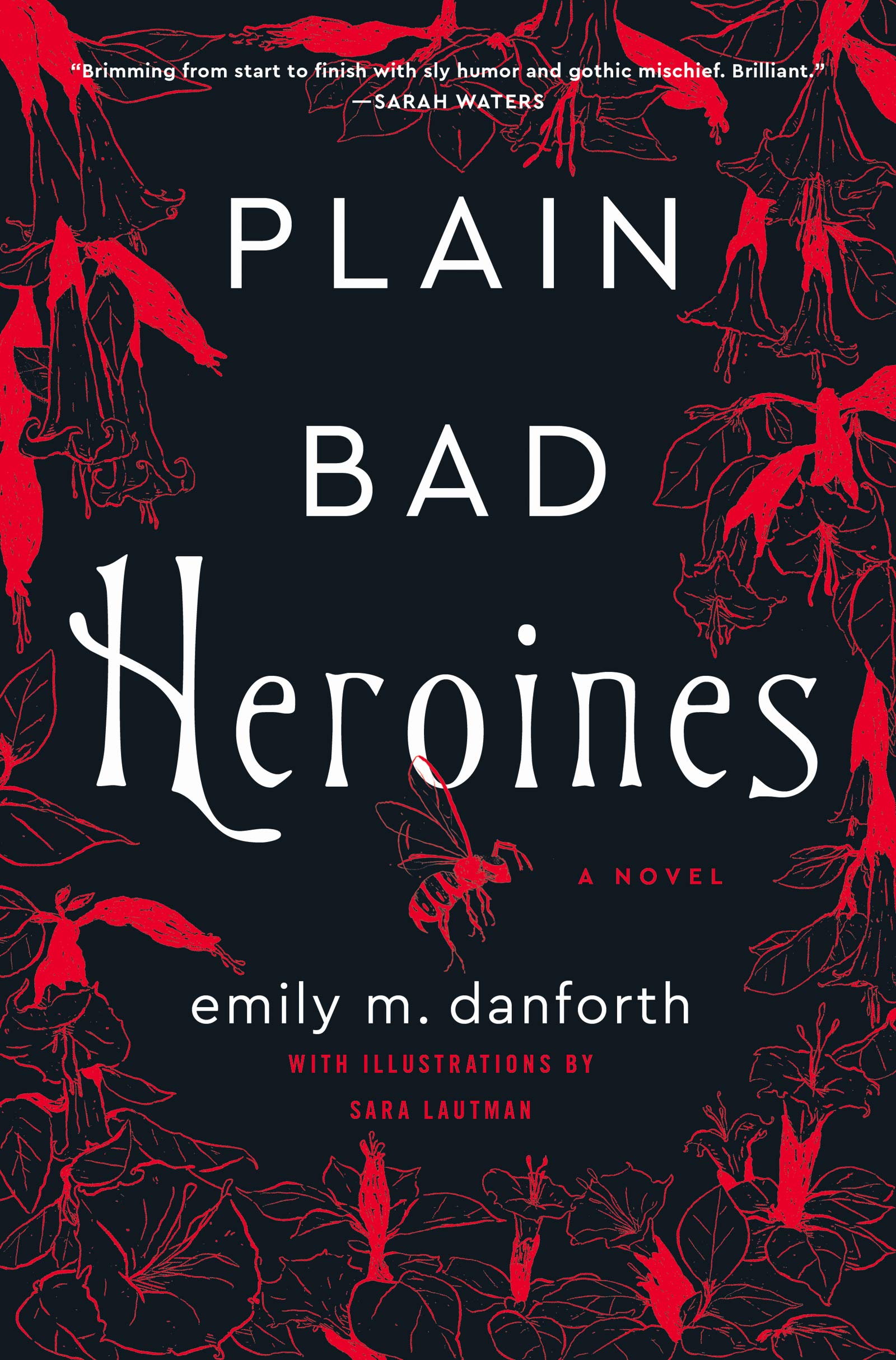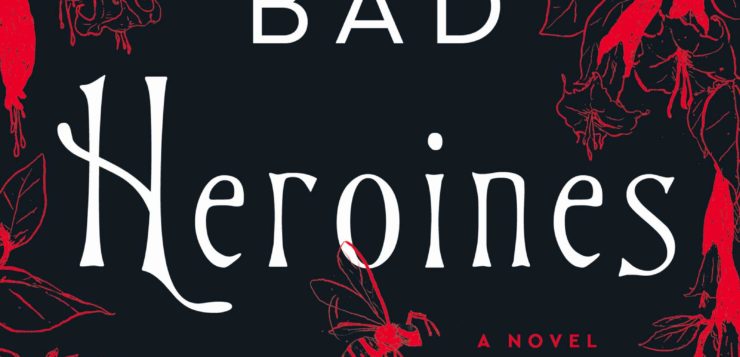 PLAIN BAD HEROINES
PLAIN BAD HEROINES
by Emily Danforth
With illustrations by Sara Lautman
William Morrow. 623 pages, $27.99
THE YEAR IS 1902, and there are problems at the prestigious Brookhants School for Girls. Big problems. Two students have been stung to death by a swarm of vicious yellow jackets on school grounds. The school’s principal and namesake, Libbie Brookhants, must deal with angry parents and grieving students, as well as her concerned lover, Alexandra “Alex” Trills, who suspects there was something supernatural about the girls’ deaths. Alex thinks their demise may somehow be tied to The Story of Mary MacLane, a scandalously Sapphic bestselling memoir with which Brookhants students are obsessed. She also thinks that Libbie is keeping secrets. Alex may be right on all counts.
Fast forward to the early 21st century, and a young woman named Merritt Emmons has written a bestselling book called The Happenings at Brookhants, which examines the strange deaths that occurred at the school 100 years earlier. When the book is made into a film, Merritt flies to Hollywood to consult with the director and the film’s star, Harper Harper, a lesbian celebrity and social media powerhouse. The cynical but sexually inexperienced Merritt becomes obsessed with Harper and grows jealous of her costar, an attractive young B-movie actress named Audrey Wells. The relationship between the three women becomes even more complicated when
Reading two intertwined stories about a haunted girl’s school is a great way to pass time during a pandemic, and even at 623 pages Emily Danforth’s new novel moves briskly along. She manages to breathe new life into Gothic clichés like the haunted house and young women in peril. At about 200 pages in I thought I knew exactly where the plot was going, but I was wrong. Danforth throws in one twist after another, and the surprises keep coming even in the final chapters.
The 1902 story slowly reveals the mysteries of Brookhants, which center on the privileged but secretive lives of Libbie and Alex. We learn how the two women met and how they became a couple, and of the fateful decision that brought them to Brookhants. Danforth mashes together Gothic horror, boarding school romance, and a Wharton-esque Gilded Age setting into one creepy tale. If I learned anything from this novel, it is that one should never make a life-altering bargain with an elderly gay occultist, particularly if the deal seems too good to be true.
The 21st-century storyline is a little breezier, but its plot is equally twisty. When the film’s production is plagued by mysterious mishaps, Merritt, Harper, and Audrey try to discover what’s really happening. Are supernatural forces at work, or is there a more mundane explanation? Or maybe they shouldn’t be taking hallucinogenic drugs at a haunted school? Danforth combines tropes from modern horror movies, queer romances, and L.A. novels like Brett Easton Ellis’ Less Than Zero into a story of women searching for authenticity in a world full of artifice.
Plain Bad Heroines is a Gothic horror novel, but it’s also concerned with the power of stories and who gets to tell them. The Story of Mary MacLane really was an early 20th-century sensation, and its frank discussion of traditionally unspoken desires disrupts Libbie and Alex’ discreet life at Brookhants. A copy of the book is hidden, examined, and coveted like a forbidden talisman by both students and faculty. A local legend about warring brothers who once owned the Brookhants property may also hold clues to the curse that seems to hang over the school, and Libbie learns there are suppressed versions of the legend that hold great power.
Meanwhile, in the 21st century, Merritt negotiates ownership of the Brookhants story with the film’s male director and also contemplates finishing Truman Capote’s unfinished novel Answered Prayers as her next writing project. All the modern characters, particularly Harper Harper, swim in a sea of social media and try to control the narratives about their lives. When Merritt and Harper’s first date becomes an online viral sensation, Merritt is left to wonder if her affections are just being used as a public relations stunt. The characters, even the ones we like, are rarely honest with each other.
Nevertheless, Plain Bad Heroines is not a grim read despite the gruesome deaths and somewhat serious themes. The book is illustrated by Sara Lautman, whose work appears in The New Yorker, and her drawings are whimsical rather than horrific. Danforth maintains a light tone as author, occasionally addressing us as “Dear Reader” and incorporating clever footnotes that comment on the plot and characters. I laughed with amazement when Libbie Brookhants was saved from deadly insects in her bathtub by her maid Addie, who, despite a delirium-inducing fever, trekked through a blizzard and up a treacherously winding staircase (in snowshoes) to rescue her employer—and catch sight of her nude body. Like the novel, the scene is dramatic, surprising, and pleasantly outrageous.
Peter Muise writes about New England folklore and legends.






